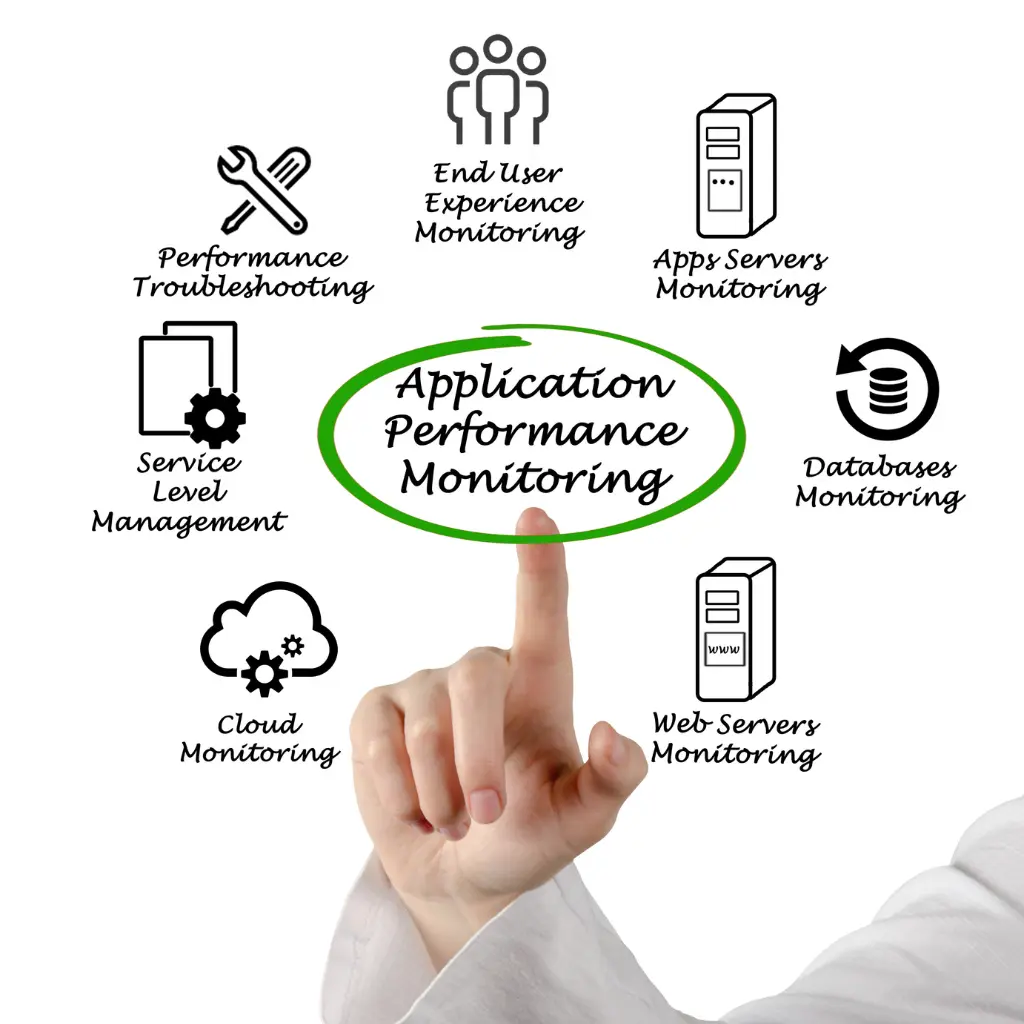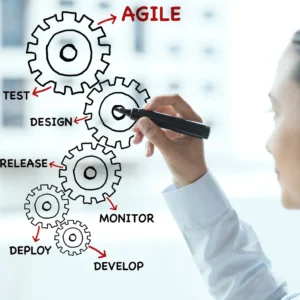
Unleashing Transformation
The Impact of Performance Monitoring and Analytics in Intelligent Process Automation (IPA)
Embarking on the transformative journey of Intelligent Process Automation (IPA) unveils a world illuminated by Performance Monitoring and Analytics.
In the intricate tapestry of business and technology, these key elements serve as the beacon, guiding organizations toward operational excellence. Delving into the core of IPA, we unravel the threads of user experience analytics, workload management, compliance and security analytics, and process efficiency metrics.
It’s not merely about automation; it’s about leveraging data-driven insights for continuous improvement. From scrutinizing errors to optimizing resources, each facet converges into a strategic roadmap for success.
Join us as we navigate the landscape of IPA, where precision meets innovation, and Performance Monitoring and Analytics stand as pillars, shaping the future of intelligent automation.
Real-Time Process Monitoring
Enhancing Efficiency: Real-Time Process Monitoring in Intelligent Process Automation (IPA)
In Performance Monitoring and Analytics in Intelligent Process Automation (IPA), real-time process monitoring stands out as a critical component. Establishing robust protocols for real-time monitoring systems is indispensable for optimizing automation processes.
Businesses must keep a close eye on critical performance indicators to succeed. This means regularly analyzing and monitoring key data points. Companies can make informed decisions and adjust their strategies as necessary by taking this action. Implementing advanced monitoring tools enables swift identification of bottlenecks and inefficiencies in the workflow.
Organizations can promptly address issues by focusing on real-time monitoring, enhancing overall operational efficiency. Utilizing cutting-edge analytics in IPA facilitates the extraction of valuable insights, aiding in informed decision-making.
Strategic planning is critical to successful implementation, ensuring seamless integration with existing processes. Regular evaluations and adjustments to monitoring protocols further refine performance, allowing businesses to adapt swiftly to changing demands.
In the dynamic landscape of IPA, embracing real-time process monitoring is not just a strategy; it’s necessary to stay competitive and achieve peak operational performance.
Predictive Analytics for Workflow Optimization
Elevating Efficiency: Predictive Analytics in Intelligent Process Automation (IPA)
Performance Monitoring and Analytics in Intelligent Process Automation (IPA) extend beyond retrospective analysis; predictive analytics emerges as a game-changer. This innovative approach anticipates potential bottlenecks and optimizes workflows proactively.
Implementing protocols that leverage data-driven insights is crucial. Predictive analytics empowers organizations to foresee performance issues, enabling proactive interventions. By anticipating challenges, businesses can streamline workflows, ensuring seamless operations and enhanced productivity.
Integrating predictive analytics into IPA aligns with the need for strategic planning. This forward-looking strategy enables organizations to stay ahead of disruptions, minimizing downtime and maximizing efficiency.
In the competitive landscape of IPA, harnessing the power of predictive analytics is not merely an option but a strategic imperative. It positions businesses to adapt swiftly to changing dynamics, fostering a proactive approach to workflow optimization.
User Experience Analytics
Enhancing User Experience: Analytics in Intelligent Process Automation (IPA)
Performance Monitoring and Analytics in Intelligent Process Automation (IPA) extends its focus to User Experience Analytics. Efficient strategies for monitoring and analyzing user interactions within automated workflows are paramount.
Incorporating user feedback into performance analytics is an essential protocol. This approach facilitates continuous improvement, aligning automated processes with user expectations and preferences.
Prioritizing User Experience Analytics in IPA is more than a trend; it’s a strategic imperative. Organizations that actively engage with user insights can tailor automated workflows, fostering satisfaction and operational efficiency.
By intertwining user-centric data into the analytics framework, businesses gain valuable perspectives. This iterative process ensures automated systems meet technical benchmarks and elevate user satisfaction levels, creating a harmonious synergy in the computerized workflow landscape.
Automation Resource Utilization Metrics
Maximizing Efficiency: Resource Utilization Metrics in Intelligent Process Automation (IPA)
Performance Monitoring and Analytics in Intelligent Process Automation (IPA) emphasizes Automation Resource Utilization Metrics. These metrics provide a comprehensive view of how automation resources, including bots and computational assets, are utilized.
Implementing protocols for optimizing resource allocation is imperative. By leveraging performance analytics, organizations can identify inefficiencies and strategically allocate resources for optimal results.
Metrics play a pivotal role in gauging the efficiency of automation processes. By analyzing these metrics, we can better allocate resources to ensure that bots and computational resources are deployed where they can have the most impact. This helps to fine-tune resource allocation.
In the competitive landscape of IPA, efficient resource utilization is a key differentiator. Organizations that harness the power of Automation Resource Utilization Metrics enhance operational efficiency and pave the way for a more cost-effective and streamlined automation ecosystem.
Exception Handling and Error Analytics
Enhancing Reliability: Exception Handling and Error Analytics in Intelligent Process Automation (IPA)
Performance Monitoring and Analytics in Intelligent Process Automation (IPA) underscores the critical focus on Exception Handling and Error Analytics. Robust protocols are essential for monitoring and analyzing exceptions and errors in automation processes.
Strategic implementation of analytics plays a pivotal role in improving error handling. By scrutinizing error data, organizations can identify patterns, enabling proactive measures to prevent future disruptions.
Efficient error analytics is not just about identifying problems but strategizing solutions. Organizations can leverage insights gained to refine automation processes, reduce errors, and enhance overall system reliability.
In the competitive landscape of IPA, a strong emphasis on Exception Handling and Error Analytics is non-negotiable. Businesses prioritizing these protocols ensure smoother operations and the ability to adapt and evolve in the face of challenges, creating a more resilient and reliable automation ecosystem.
End-to-End Process Analytics
Holistic Insight: End-to-End Process Analytics in Intelligent Process Automation (IPA)
Performance Monitoring and Analytics in Intelligent Process Automation (IPA) reach their zenith with End-to-End Process Analytics. This approach involves comprehensive analytics for assessing automation processes from start to finish.
Establishing protocols for identifying and addressing performance issues across the workflow is paramount. It ensures a holistic understanding of the automation process, enabling strategic interventions to enhance overall efficiency.
End-to-end process Analytics offers businesses a panoramic view, allowing them to pinpoint bottlenecks and streamline operations. This comprehensive approach facilitates proactive measures, ensuring a smoother and more optimized workflow.
Organizations prioritizing End-to-End Process Analytics set themselves apart in the competitive landscape of IPA. The ability to analyze the complete automation journey not only refines current processes but also positions businesses to embrace future advancements with informed and strategic decision-making.
Compliance and Security Analytics
Ensuring Integrity: Compliance and Security Analytics in Intelligent Process Automation (IPA)
Performance Monitoring and Analytics in Intelligent Process Automation (IPA) extends its vigilance to Compliance and Security Analytics. This entails metrics and analytics dedicated to assessing compliance and security within automated processes.
Establishing robust strategies for using analytics becomes imperative. These strategies ensure adherence to regulatory standards and security protocols, safeguarding sensitive data, and compliance with industry-specific requirements.
Compliance and Security Analytics act as the watchdogs of automated processes, providing a vigilant eye on adherence to standards. By leveraging analytics, organizations uphold the integrity of their operations and mitigate risks associated with non-compliance and security breaches.
In the competitive landscape of IPA, prioritizing Compliance and Security Analytics is non-negotiable. Organizations that fortify their automation processes with these analytics meet industry standards and cultivate a culture of trust, safeguarding their reputation and maintaining the highest levels of operational integrity.
Workload and Capacity Analytics
Balancing Act: Workload and Capacity Analytics in Intelligent Process Automation (IPA)
Performance Monitoring and Analytics in Intelligent Process Automation (IPA) dives into the intricacies of Workload and Capacity Analytics. This involves assessing the workload on automation processes and determining the system’s capacity.
Establishing protocols for scaling resources based on workload analytics is crucial. It ensures that the system maintains optimal performance, adapting dynamically to fluctuations in workload without compromising efficiency.
Workload and Capacity Analytics act as the compass for resource allocation. Organizations can strategically optimize capacity by analyzing workload patterns, preventing bottlenecks and ensuring seamless operations during peak demand.
In the competitive landscape of IPA, balancing workload and capacity is a strategic advantage. Organizations that integrate these analytics enhance efficiency and demonstrate a proactive approach to resource management, contributing to sustained performance excellence.
Process Efficiency Metrics
Streamlining Operations: Process Efficiency Metrics in Intelligent Process Automation (IPA)
Efficient automated processes are crucial for businesses to evaluate. Performance monitoring and analytics are employed in Intelligent Process Automation (IPA) to achieve this. These tools spotlight process efficiency metrics, which provide valuable insights into automated processes.
Establishing protocols for identifying improvement areas is pivotal. Performance analytics scrutinize efficiency metrics, enabling organizations to streamline processes effectively.
Process Efficiency Metrics serve as a compass for operational excellence. Organizations enhance efficiency by systematically assessing and refining automated processes, ensuring optimal performance and resource utilization.
In the competitive landscape of IPA, prioritizing Process Efficiency Metrics is a strategic imperative. Organizations that leverage these metrics optimize their current operations and lay a foundation for continuous improvement, fostering a culture of efficiency and excellence.
Continuous Improvement through Data-Driven Insights
Elevating Excellence: Continuous Improvement with Data-Driven Insights in Intelligent Process Automation (IPA)
Performance Monitoring and Analytics in Intelligent Process Automation (IPA) extends its prowess to Continuous Improvement through Data-Driven Insights. Strategic strategies involve leveraging these insights to fuel ongoing enhancement initiatives.
Establishing protocols for using analytics as a catalyst for iterative improvements is paramount. Data-driven insights not only inform but drive the optimization of automation workflows, fostering a culture of continuous improvement.
In the competitive landscape of IPA, organizations that harness data-driven insights position themselves as frontrunners. The ability to extract valuable information and apply it dynamically ensures both efficiency today and resilience and excellence in the face of evolving demands.
Conclusion
In Intelligent Process Automation (IPA), Performance Monitoring and Analytics play a crucial role. These integral components act as the compass guiding organizations towards operational excellence. By embracing metrics and analytics, businesses gain invaluable insights into their automated processes, enabling them to refine efficiency, enhance user experience, ensure compliance, and adapt to changing workloads.
The protocols established for Continuous Improvement through Data-Driven Insights are crucial in this journey. Utilizing these insights enables organizations to address current inefficiencies and proactively prepare for future challenges. Workload and Capacity Analytics ensure resource optimization, while End-to-End Process Analytics provides a comprehensive view, allowing for strategic interventions.
Exception Handling and Error Analytics act as vigilant gatekeepers, maintaining the integrity of automated processes, and Compliance and Security Analytics uphold standards and trust. From user experience to workload management, each sub-topic converges into a collective effort to fortify automation ecosystems.
In navigating the complexities of automation, Process Efficiency Metrics become the North Star, guiding organizations toward streamlined operations. The seamless integration of these components transforms Intelligent Process Automation from a technological investment into a strategic advantage, ensuring sustained excellence in the ever-evolving business and technology landscape.
Related Articles
- Choosing the Right Automation Tool in 7 Steps
- A 9-Step Guide to IPA Implementation: Energise Your Operations
- Navigating the Roadblocks of IPA – The Top 9 Challenges
- AI in Intelligent Process Automation – Unleash the Power of AI
- 9 IPA Examples in Small-Scale Industries
- Power of Intelligent Business Process Automation – Efficiency
- AI Business Process Management: Unleashing the Power
- Business Process Management with AI Integration
- AI for Reengineering Business Processes
- Hyperautomation: Redefining BPM with AI
- The Role of AI in Business Process Modelling
- AI-driven Customer Onboarding – Unleash the Power of AI
- Effective Process mapping in Intelligent Process Automation
- Intelligent Process Automation Adoption – The Best Strategy Guide
- TechInfra in IPA: A Comprehensive Guide
- Elevating Intelligent Automation with Continuous Improvement
- Comprehensive Approach to Cost-Benefit Analysis in IPA
- Vendor Selection in IPA – Comprehensive Guide
- Implementing Agile in Intelligent Process Automation (IPA)
- Scalability and Integration in Intelligent Process Automation
- Cognitive Automation in IPA: Innovating Ethical Efficiency
- Mastering Symphony: Bot Development in IPA Unveiled
- UI/UX Mastery in IPA: Elevating Automation Experiences
- Compliance and Security in IPA – A Guide Ensuring Trust
- Impact of Performance Monitoring and Analytics in IPA
- Driving Success: Data Management in IPA
- Crucial Role: Documentation in IPA Triumph
- Optimizing IPA – Continuous Improvement Strategies






























